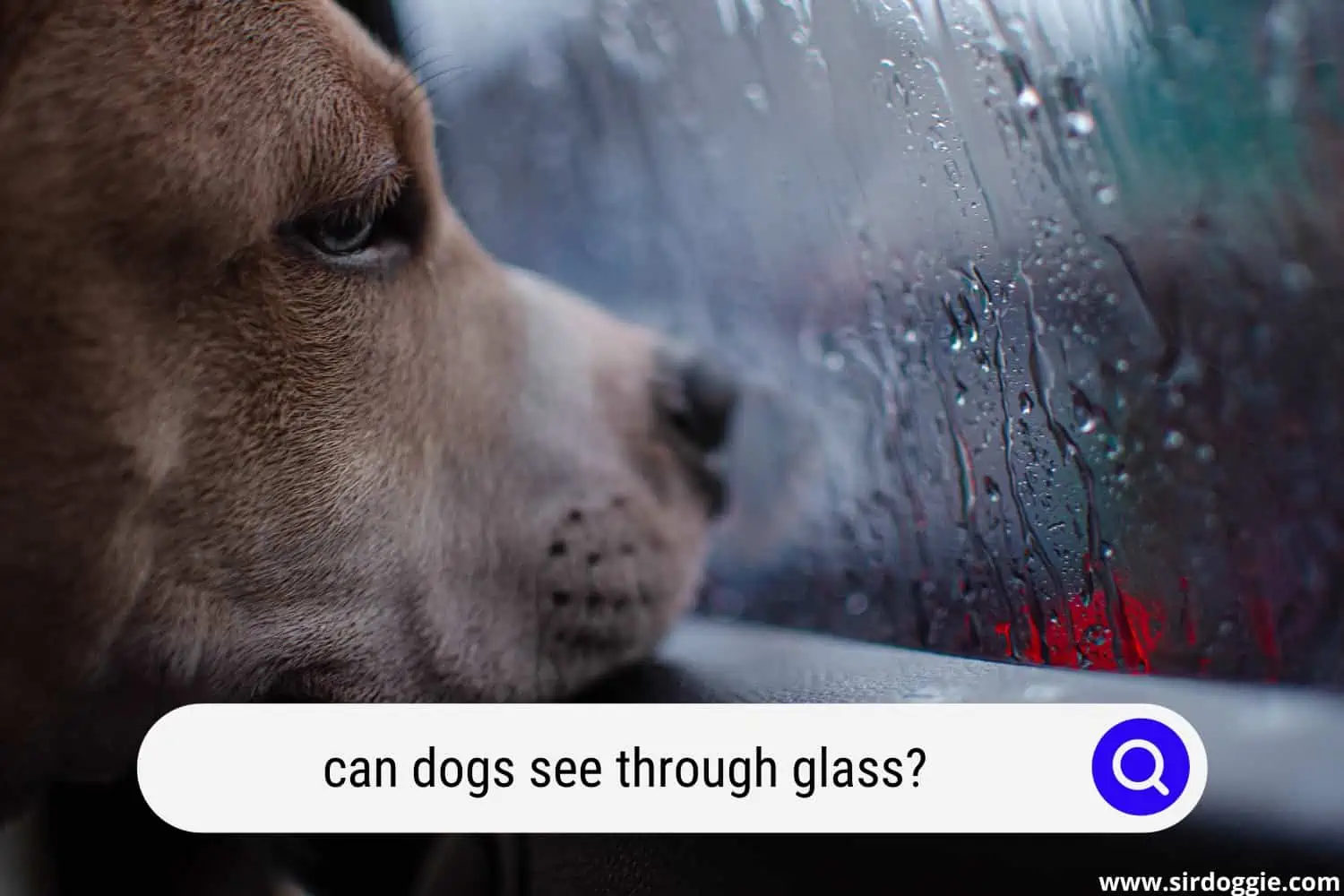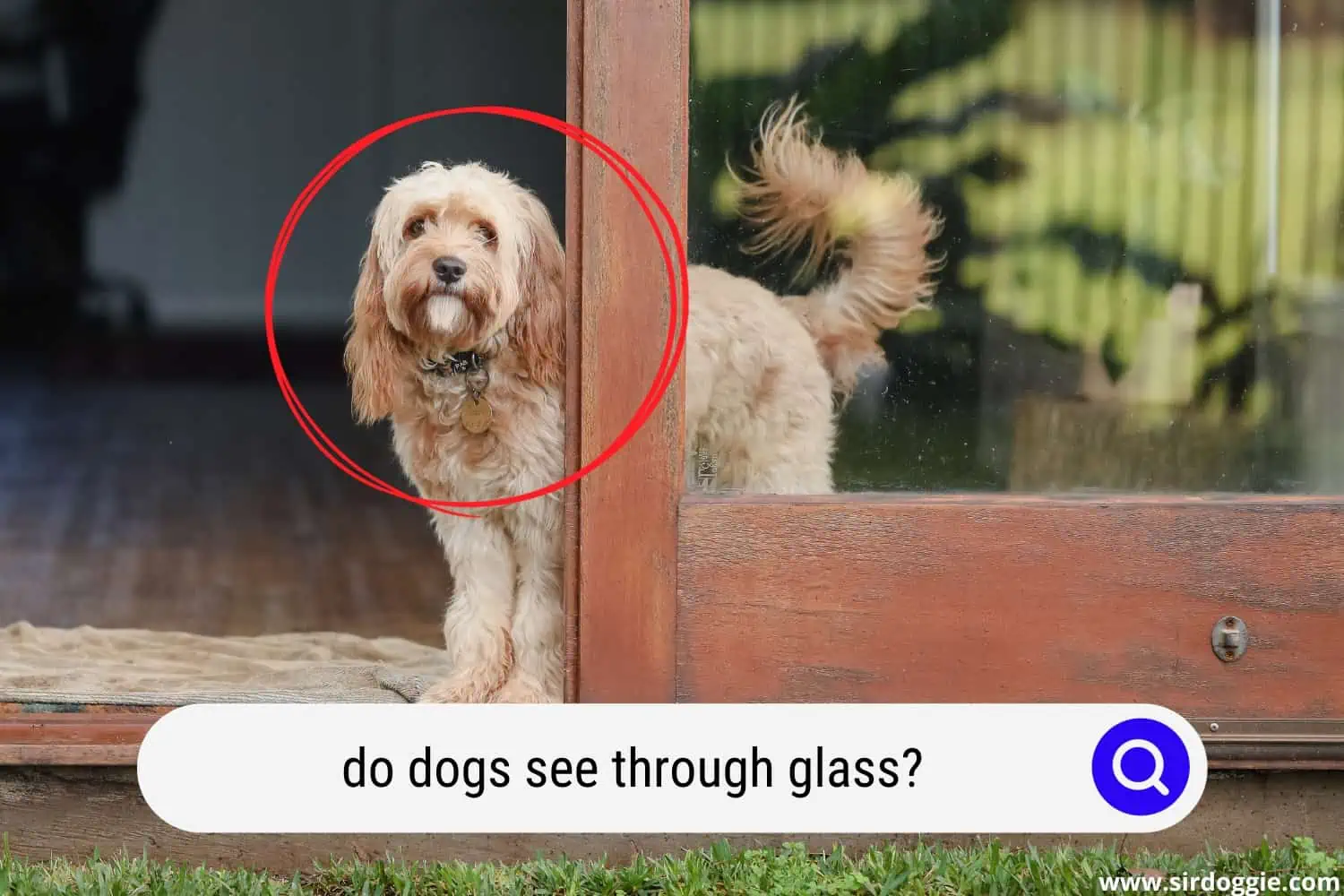Can Dogs See Through Glass? Read This First!
Ever wondered if dogs could see through glass? Dogs may have one of the best sets of olfactory lobes for sensing odors and any other particular scents, but that same level of intensity doesn’t quite apply to what is obtainable through their sense of sight. Your dog may be able to recognize you from afar, but that doesn’t mean they have better vision than other animals.

According to Pet Docs Veterinary Clinic, dogs have less binocular vision than humans—as well as less visual acuity. Humans with normal eyesight have 20/20 vision. This is the reason that the average person can distinguish letters and objects at a general distance of 20 feet.
Dogs can be 20 feet away from an object and see it, and they can also see a human standing 75 feet away because they typically have 20/75 vision. However, some dog breeds have better visual acuity than others. One example is the Labrador breed of dog, which is commonly used as seeing eye dogs and bred for better eyesight. They can have vision closer to 20/20.
However, can dogs see through glass?
Yes, dogs can see through glass very well when looking out from relatively dark to relatively light environments. However, their vision is much different from what we as humans experience and not quite as acute compared to us. They mainly use their ears and noses to make up the difference.
They can see moving objects better than they see stationary objects because of the larger number of rods in their retinas. This is the reason why motion sensitivity is a critical aspect of canine vision. Therefore, even the smallest change in your body posture means a lot to your dog.
Interesting, right? Keep reading for even more in-depth knowledge on whether dogs can see through glass or not and how exactly it works for them.
Dogs Can See Through Glass
Dogs are one of the most skilled animals in terms of their senses. This is why they can sense the presence of a person before any other human could. Although their sight—among other senses—is behind that of humans, they can still see through glass.
However, dogs are unable to process some of the details that humans can. It generally can be concluded that they have a lower visual resolution compared to us. Whether it is a glass window, door, etc., their sight is the same for seeing through all of these.
Furthermore, some of the signs you can check to ascertain their level of vision through glass include the following:
- Head tilting — When a dog encounters a glass barrier, it tilts its head from one side to another to assess and understand the situation (the glass barrier). This suggests that there is some level of vision being used in interpreting its see-through surroundings.
- Elevated ears — One of the physical signs you can see in a dog that is curious around a glass barrier is raised or elevated ears.
- Alertness — When your dog comes near a glass door, it will become more alert in order to assess and understand what the situation is. One of the questions that would be going on in their minds is: is this a barrier or not?
- Sniffing — One of the best senses in dogs is their sense of smell. They try to sniff any material they come by to check if it is beneficial or hazardous. The same principle applies when they come into contact with a glass obstacle. They sniff as a way to assess what the material is, what it is made from, etc.
- Barking — When dogs see a mirror for the first time, they don’t inspect their shape or image to see what they look like; rather, they bark at their reflection to signify that it’s some form of threat to them. However, when they come into contact with a glass barrier, they also often try to bark at it or bark at a nearby object close to the glass that they see as a potential threat in the confusing situation.
What Does a Dog’s Vision Look Like?
Nature is the best architecture when it comes to creation. Dogs’ eyes are created in a way quite different from that of humans. However, there are still light receptors called cones and rods in the retinas of both dogs and humans.
By comparison, though, the number of cones and rods in dogs differs from that of humans. Dogs have fewer cone receptors, which explains why they can’t see as many colors as humans do. Additionally, human cones can detect three main colors—red, green, and blue—as well as all of the colors formed by mixing those three.
Dog cones can only detect two colors, with some experts saying these may likely be blue and yellow. According to Alexandra Horowitz, the exact colors a dog sees are difficult to determine, but she said it’s similar to what we see at dusk. To compensate, there are far more rods in a dog’s eyes than in humans, and this is why they see much better at nighttime and in dark conditions.
Dogs’ eyes are also characterized by a layer of tissue absent in humans called the tapetum lucidum, which reflects more light into the retina. This is responsible for boosting dogs’ night vision even further. This is also the reason dogs’ eyes shine more in the dark and at night.

Related Questions
Which Animals Cannot See Through Glass?
Birds are animals that cannot detect glass.
They perceive glass as just a reflection of vegetation or the sky. Sometimes, they see glass, whether transparent or reflective, and believe it is just another space they can simply pass through just like anywhere else. Often, they may even see a reflection as a threat and try to attack.
Another angle where birds are lacking is their inability to learn from experience—especially when they have previously come into contact with glass in the past.
Apart from birds, laboratory rats and mice are also somewhat limited in the fact that they cannot see through red transparent objects. When they are kept in red cages, they feel safer and less stressed, which eases their clinical examination.
Can Dogs See in The Dark?
Yes—dogs can see in the dark! They have more rods than cones in their retinas compared to humans, which is why they can see in low light. This is also why their night vision is so much more developed than other animals.
Their ability to see well at night and in the dark also makes them well fit for use as both guard dogs and for hunting.

Family Dog Expert Author
Hi there! I’m Stuart, a devoted dog lover and family dog expert with over a decade of experience working with our furry companions. My passion for dogs drives me to share my knowledge and expertise, helping families build strong, loving bonds with their four-legged friends. When I’m not writing for SirDoggie, you’ll find me hiking, playing with my beautiful dog, or studying music.